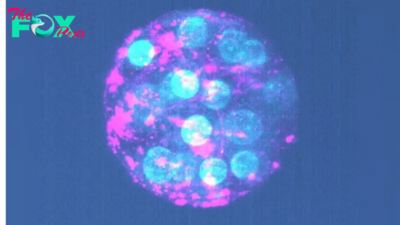Health
Chemicals that make babies smell sweet and teens smell 'goat-like' revealed
For Science, volunteers sniffed out odorous chemicals in the armpit sweat of babies and teenagers. Perhaps unsurprisingly, they found that young children smelled like flowers and teens smelled like goats — but now, we know which chemicals are responsible for each of these odors.
Many of us are familiar with babies' sweet scent, but we may wince while catching a whiff of a teen who's skipped out on that day's deodorant. Previous studies have also found that parents prefer the odors of babies to those of teenagers, which may somewhat influence their affection toward their children. Intrigued by the role scent plays in relationships, lead study author Helene Loos, an aroma researcher at Friedrich Alexander University in Germany, aimed to explore how BO changes throughout life.
In the research, published March 21 in the journal Communications Chemistry, Loos and her colleagues provided 18 young children, ages 0 to 3, and 18 teenagers, ages 14 to 18, with T-shirts with cotton pads sewn into the armpits. After the participants wore the tees for one night's sleep, the researchers sampled smelly substances that had soaked into the pads.
Using gas chromatography, a technique that splits up chemicals with different properties, the researchers separated and detected the individual odorants in each BO sample. Then, they asked volunteers to smell and describe each chemical's scent.
Related: Super sensitive to BO? Maybe blame your genes
Forty-two odorants were detected, with both age groups producing most of them, Loos told Live Science. Note that a single odorant can set off many smell sensors in the nose, and combinations of odorants can trigger unique and complex patterns of activity that differ from what one odorant does alone. Nonetheless, the component scents in a given bouquet influence whether it smells bad or good to the sniffer.
"We were not surprised by the overall findings, but it was very interesting to see the rich variety of compounds," Loos said of the odorants detected. Among these, a group of chemicals called aldehydes was the most diverse, giving off "cardboard-like," "deep-fried" and "nutty" aromas, for example.
-

 Health1h ago
Health1h agoThe Surprising Benefits of Talking Out Loud to Yourself
-

 Health3h ago
Health3h agoDoctor’s bills often come with sticker shock for patients − but health insurance could be reinvented to provide costs upfront
-

 Health9h ago
Health9h agoHow Colorado is trying to make the High Line Canal a place for everyone — not just the wealthy
-

 Health18h ago
Health18h agoWhat an HPV Diagnosis Really Means
-

 Health23h ago
Health23h agoThere’s an E. Coli Outbreak in Organic Carrots
-

 Health1d ago
Health1d agoCOVID-19’s Surprising Effect on Cancer
-

 Health1d ago
Health1d agoColorado’s pioneering psychedelic program gets final tweaks as state plans to launch next year
-

 Health2d ago
Health2d agoWhat to Know About How Lupus Affects Weight



























